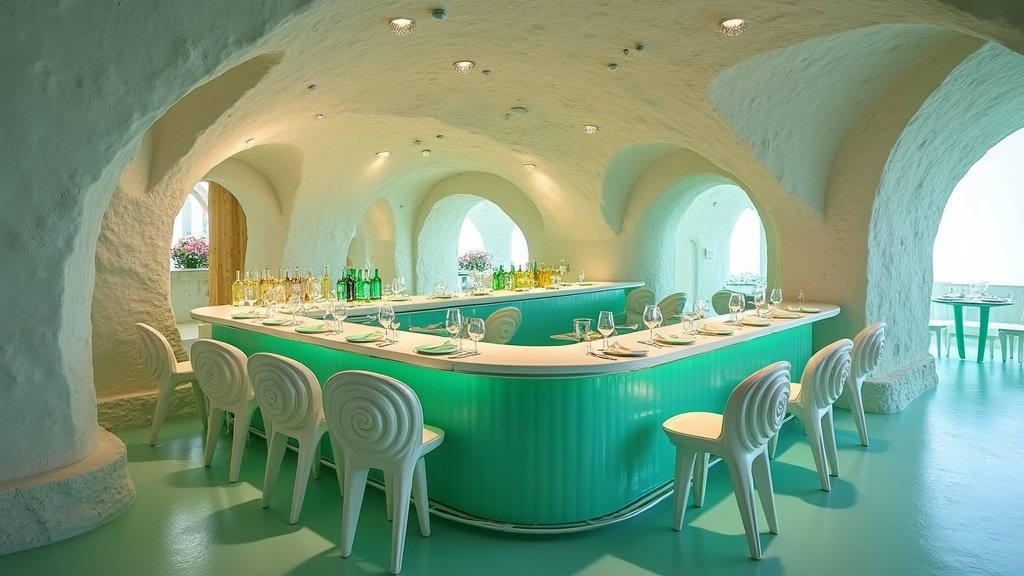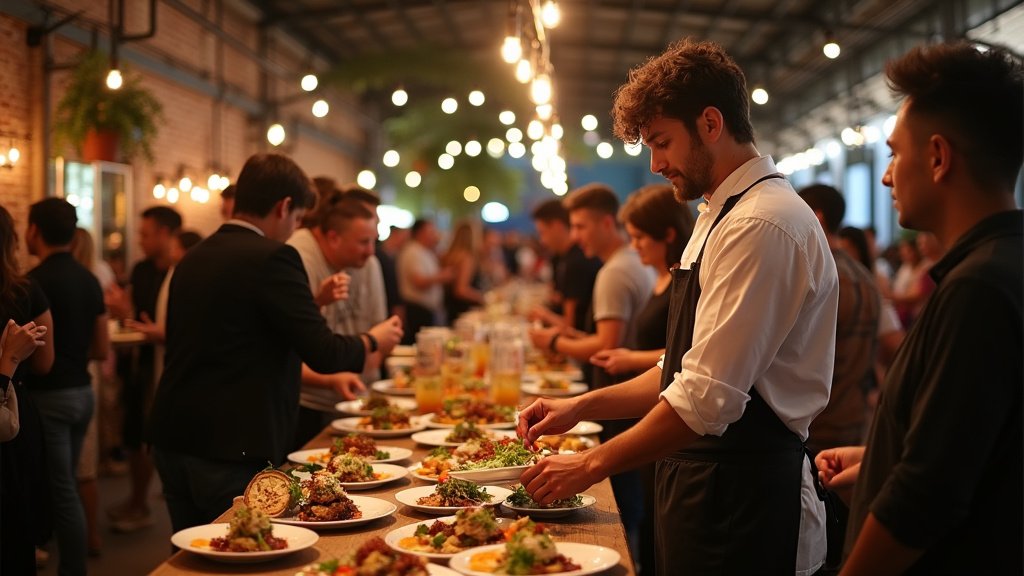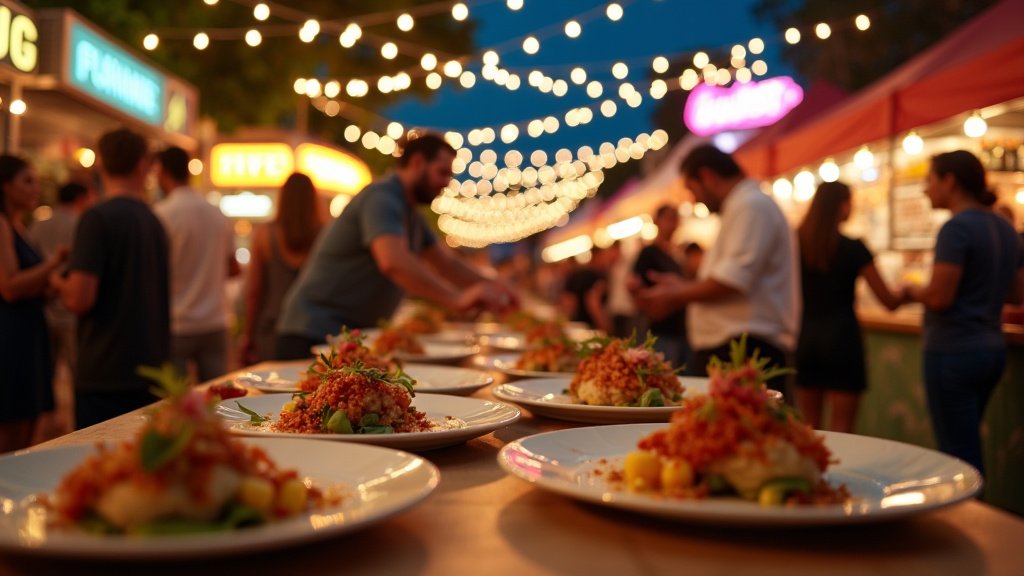Los Angeles has long been hailed as one of the most dynamic culinary capitals in the world. Home to a sprawling array of cultures and cuisines, the city offers a food scene that feels like a continuous conversation between tradition, innovation, and globalization. And if there’s one thing that has become clear in 2024, it’s that L.A.’s food culture is evolving faster than ever, with some key trends making waves that are as diverse as the city itself.
From fusions that push boundaries to an emphasis on sustainability, wellness, and hyper-local ingredients, the City of Angels is bursting with new ideas, tastes, and experiences. Whether you’re a foodie looking to explore the latest hotspots or a casual diner curious about what’s next, there’s a lot to dive into. Here’s a deep look at what’s trending in Los Angeles’ food scene this year.
1. Fusion Without Borders: Global Cuisines Collide in New Ways
Los Angeles has always been a melting pot of global influences, but in 2024, fusion cuisine is being reimagined. Gone are the days of simplistic mash-ups like Korean tacos (though those still have their devoted fan base); now, chefs are diving deeper into culinary traditions from far-flung places and finding common threads to tie them together in ways that feel organic rather than gimmicky.
For example, Filipino and Mexican cuisines are experiencing an exciting crossover in the city. Both culinary traditions rely heavily on bold, flavorful sauces, acidic elements, and creative uses of protein. The result? Dishes like adobo birria tacos and lumpia filled with cochinita pibil are appearing on menus, exciting both communities and curious foodies alike. Meanwhile, Japanese-Peruvian fusion, which has been making noise in other parts of the world, has found a new home in L.A., with sushi bars serving ceviche-inspired rolls and tiradito sashimi.
Chefs are no longer just blending flavors for novelty—they’re doing it with cultural respect, allowing diners to taste how different cuisines can enhance each other when paired thoughtfully. This deeper exploration of global flavors has become one of the hallmark trends shaping the city’s evolving culinary identity.
2. Sustainable Dining: From Farm to (Urban) Table
Sustainability isn’t just a buzzword in 2024’s Los Angeles—it’s the foundation of many new dining concepts. With California’s continuing drought concerns and growing consumer awareness of environmental issues, more restaurants are adopting eco-conscious practices that aim to reduce waste, carbon footprints, and water use. But L.A. being L.A., the movement has a distinct flair.
Urban farming has taken on a whole new meaning in the city, as rooftop gardens and vertical farming projects pop up at some of the trendiest new restaurants. These micro-farms allow chefs to source ingredients directly from their own operations, reducing transportation emissions while guaranteeing hyper-fresh produce on the plate. Diners might enjoy a salad made entirely from rooftop-grown greens or a cocktail garnished with herbs plucked moments before.
Even beyond the garden-to-table movement, sustainability has worked its way into other aspects of L.A.’s food culture. Zero-waste cooking has become a badge of honor for chefs, with kitchens transforming scraps into star ingredients. Carrot tops are being used in pesto, bones are simmered into broths, and even banana peels are finding their way into innovative desserts. These efforts not only reduce food waste but also showcase a level of creativity that keeps diners engaged and excited.
3. Plant-Based Cuisine 2.0: Beyond Burgers and Bowls
While plant-based cuisine has been trending for years, 2024 marks the next evolution of this movement in Los Angeles. The days of basic veggie burgers and salads are far behind us. Now, the city’s chefs are diving deep into the world of plant-based proteins, exploring global culinary techniques that use vegetables as the star, rather than a mere substitution for meat.
More restaurants are championing the idea of “vegetable-forward” rather than “meatless” dining. In some of the most creative kitchens, you’ll find dishes like smoked carrot lox, mushroom ‘scallops,’ or even grilled whole cauliflower taking center stage, not as an alternative but as a worthy main course. Notably, the flavors are bold, and the presentation rivals that of any steakhouse dish.
Moreover, plant-based seafood has started making waves. Companies creating realistic shrimp, fish fillets, and sushi-grade alternatives have found their way into some of the city’s hottest new spots. Sushi chefs are experimenting with these proteins in ways that maintain the integrity of the dish while embracing sustainability.
Los Angeles’ shift towards plant-based dining isn’t just about health or environmentalism anymore—it’s about pushing the boundaries of what’s possible with food, crafting new dining experiences that appeal to carnivores, vegans, and everyone in between.
4. Experiential Dining: Beyond Just a Meal
Dining in Los Angeles has become an experience that goes well beyond just eating. The city is home to a new wave of restaurants where every meal feels like an event, designed to engage all of the senses. Whether it’s immersive pop-ups, themed restaurants, or multi-sensory tasting menus, experiential dining has never been more popular.
At the heart of this trend are restaurants where the ambiance and narrative are just as important as the food. Some spots feature interactive elements—diners might get to cook their own dishes tableside with the help of chefs, or participate in unique, artistic presentations of food that engage sight, sound, and smell along with taste. Pop-up dinner events hosted in secret locations also contribute to the city’s love for this immersive approach, with courses paired to everything from live music to light shows.
But experiential dining goes beyond theatrics. Restaurants are finding ways to connect people with food on a deeper level, often through storytelling. Chefs are designing menus that reflect personal histories or highlight specific cultural traditions, allowing diners to feel more connected to the food on their plate. This shift towards dining as a form of entertainment is a trend that’s bound to keep growing as people seek out unique and memorable ways to enjoy their meals.
5. The Rise of the All-Day Cafe: Where Coffee Meets Cuisine
The all-day cafe has become a staple in L.A.’s food scene, filling a niche between casual dining and the coffeehouse. These spots aren’t just about grabbing a latte or a quick bite—they’re full-on dining destinations, where the food, drinks, and vibe are carefully curated to keep customers lingering from breakfast through dinner.
Much of the appeal lies in their versatility. All-day cafes offer a blend of laid-back comfort and culinary sophistication, with menus that range from avocado toast and artisanal pastries to inventive grain bowls and small plates for the lunch and dinner crowd. The coffee programs are often just as important as the food, with skilled baristas brewing up single-origin pour-overs, matcha lattes, and even nitro cold brew cocktails.
The trend is particularly popular in L.A. neighborhoods where the creative class flocks—Silver Lake, Echo Park, and Venice Beach, for instance. These cafes have become a social hub where locals gather to work, meet friends, or enjoy a solo meal. The rise of these all-day spots speaks to a larger trend of blending lifestyles with food culture, creating spaces that feel just as much like community centers as restaurants.
6. Low-and-No Alcohol Beverages: Sipping on Sobriety
Los Angeles has always been ahead of the curve when it comes to health and wellness trends, and the rise of low- and no-alcohol beverages in the city’s food scene is a clear reflection of this. In 2024, L.A.’s bars and restaurants are embracing the sober-curious movement, offering sophisticated drinks that deliver all the flavor without the alcohol.
Mocktails have come a long way from overly sweet, syrupy concoctions. Now, bartenders are treating non-alcoholic drinks with the same care and creativity as they do cocktails, crafting complex and balanced flavor profiles using fresh herbs, artisanal tonics, house-made shrubs, and exotic spices. For those who enjoy the social aspect of drinking but want to avoid alcohol, these beverages offer a sophisticated alternative that doesn’t compromise on taste or experience.
And it’s not just mocktails making waves—non-alcoholic spirits, beers, and wines have also found their place on menus, providing options for diners who still want to enjoy the ritual of pairing a drink with their meal, sans the alcohol. These options are proving especially popular in wellness-centric areas like Santa Monica and West Hollywood, where health-conscious dining trends often begin.
7. Hyper-Regionalism: Local Ingredients with Global Technique
In a city as diverse as Los Angeles, hyper-regionalism doesn’t just refer to the use of local ingredients—it’s about tapping into specific cultural flavors and techniques that highlight L.A.’s unique position as a global food city. Chefs are sourcing ingredients from local farms, but what’s even more interesting is how they’re using these ingredients to interpret traditional recipes from their own heritage or places they’ve traveled.
For example, chefs might use California-grown chiles to recreate dishes from Oaxaca, or source seafood from the Pacific and prepare it using Japanese or Mediterranean techniques. This combination of local ingredients with global culinary practices has allowed for some of the most exciting, boundary-pushing dining experiences in the city. It’s hyper-local, but with an international twist that reflects L.A.’s cultural tapestry.
The Future of L.A.’s Food Scene
Los Angeles is a city that never stops evolving, and its food scene is no different. In 2024, the trends shaping the culinary landscape are more innovative, inclusive, and exciting than ever. From fusion that honors cultural traditions to sustainability practices that point towards the future, L.A.’s chefs are redefining what it means to dine out. Whether you’re a resident or a visitor, the city’s ever-changing food scene promises a gastronomic adventure that’s as dynamic and diverse as Los Angeles itself.





